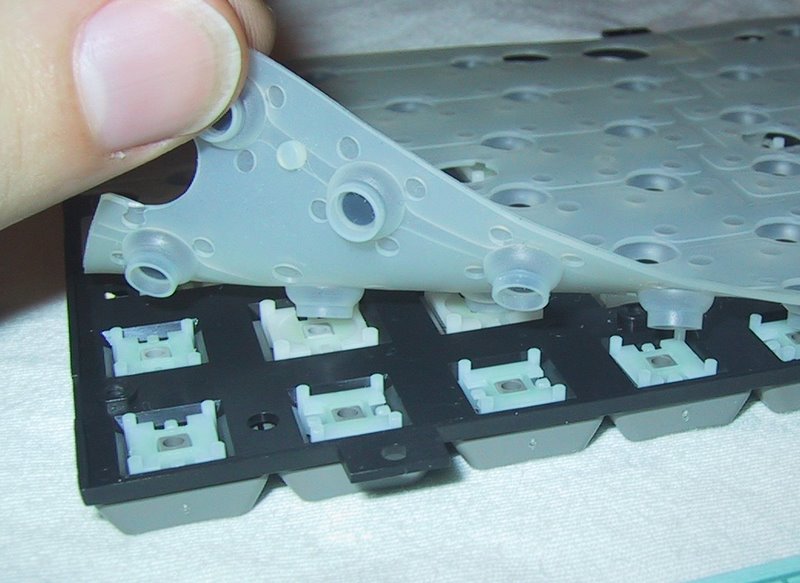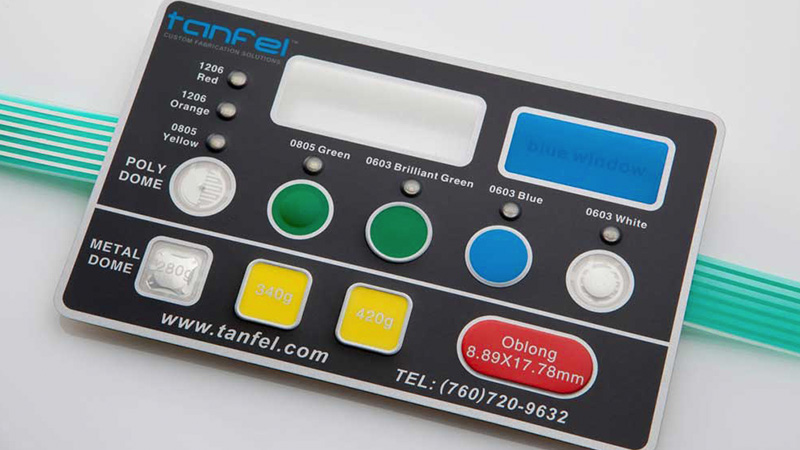Discover Just How Membrane Switches Enhance Usability and Product Performance
Discover Just How Membrane Switches Enhance Usability and Product Performance
Blog Article
Membrane Layer Switches Over Explained: A Comprehensive Overview to Their Benefits
Membrane layer switches stand for a versatile and advanced remedy for creating individual interfaces across a variety of fields. Their multilayered design not only guarantees functionality with basic stress but also offers significant advantages, such as durability and customization. As markets progressively seek reliable and reliable control user interfaces, understanding the particular benefits and applications of membrane layer switches over comes to be crucial. Nonetheless, the ins and outs of their style and execution present unique obstacles that value closer exam. What elements should be taken into consideration to fully take advantage of their capacity in contemporary applications?
What Are Membrane Switches?

When pressure is put on the membrane button, the layers make call, finishing an electrical circuit. This straightforward system enables for a variety of applications, from consumer electronics to commercial machinery. Membrane layer buttons are frequently designed to be water-proof and immune to dirt and pollutants, making them ideal for environments where toughness is necessary.
Additionally, the versatility of the materials used in membrane switches over facilitates innovative designs that can conform to different shapes and measurements. This flexibility contributes to their popularity in diverse fields, consisting of medical devices, vehicle controls, and home appliances. In general, membrane layer switches stand for an essential component in modern-day interface innovation, bridging the space between individuals and electronic systems.
Trick Advantages of Membrane Layer Buttons
Among the myriad of individual interface alternatives readily available, membrane switches over attract attention for their unique combination of advantages. Among the main advantages is their light-weight and portable layout, which allows for assimilation into a variety of gadgets without including substantial mass. This is specifically useful in applications where room is limited.
In addition, membrane changes offer toughness and resistance to ecological factors. They are generally constructed with materials that can stand up to dampness, dust, and numerous chemicals, making them ideal for rough conditions. This durability adds to a much longer life expectancy contrasted to standard mechanical switches.
One more substantial advantage is the versatility in personalization. Membrane buttons can be printed with various graphics, shades, and textures, permitting customized designs that satisfy particular branding or functional needs. This versatility encompasses the variety of layers and circuit choices, giving engineers with several configurations.
Furthermore, the responsive feedback provided by some membrane layer switches improves customer experience, making them a lot more user-friendly to run. Last but not least, the ease of cleansing and maintenance further strengthens membrane layer buttons as a useful selection in both consumer and industrial applications. Membrane Switches. On the whole, these crucial advantages make them a recommended remedy for lots of designers and producers
Applications in Different Industries
How do membrane layer switches discover their place across diverse industries? Their versatility and performance make them indispensable elements in fields varying from healthcare to customer electronic devices. In clinical gadgets, membrane switches are used for their ease of cleansing and resistance to contamination, guaranteeing health in settings where sterility is important.
In the consumer electronics market, these buttons offer sleek, user-friendly interfaces that improve product visual appeals while keeping resilience against wear and tear. Automotive applications gain from membrane layer switches over Go Here also, where they are made use of in control panels and control board, supplying trustworthy performance in challenging problems.
Additionally, commercial machinery utilizes membrane buttons for control board because of their toughness, capacity to withstand extreme environments, and adjustable designs that provide to certain functional requirements. The food industry leverages membrane layer buttons for their convenience of usage and resistance to spills, making certain operational performance in busy settings.
Inevitably, the versatility of membrane switches across these varied applications emphasizes their vital function in modern innovation, improving customer interaction while meeting industry-specific requirements. Their proceeded advancement assures additional combination right into arising areas and innovative items.
Layout and Modification Alternatives
The design and customization choices readily available for membrane switches are vital for tailoring visit their website user interfaces to fulfill certain customer requirements and visual choices. These switches can be designed in various shapes, dimensions, and formats, enabling seamless assimilation right into diverse applications. The adaptability in design implies that suppliers can create distinct interfaces that boost functionality and preserve brand identification.
Custom graphics, structures, and colors can be put on the surface area of the membrane switch, offering an opportunity for branding and customer involvement. Furthermore, backlighting choices, such as LED illumination, can be integrated to improve visibility in low-light conditions, thus enhancing performance.
Functional elements can also be tailored, including tactile feedback and actuation force, which can be adapted to suit different user interactions. The selection of materials, such as polyester or polycarbonate, enables variants in sturdiness and environmental resistance, accommodating the certain needs of different useful source sectors.
Inevitably, the substantial style and customization capabilities of membrane layer switches make it possible for firms to create straightforward and visually enticing interfaces, making certain that their products fulfill both aesthetic and practical demands successfully. Membrane Switches.
Factors To Consider for Implementation
Implementing membrane switches over calls for careful consideration of various factors to ensure ideal performance and user experience. Aspects such as exposure to wetness, severe temperature levels, and chemical compounds can substantially affect the button's performance and durability.

One more essential aspect is the button's layout and design. Guaranteeing that the tactile comments and actuation force line up with user assumptions improves usability. Performing individual testing can give valuable insights into the optimum layout.
Additionally, compatibility with digital parts must be examined. The switch's circuitry need to align with the total system architecture, ensuring trusted signal transmission and decreasing disturbance.
Furthermore, manufacturing approaches and costs need to be evaluated. The choice between personalized layouts and standard versions can affect both budget and lead time.
Last but not least, think about upkeep and repair service. Membrane layer switches might require details cleansing and treatment procedures to keep their appearance and performance over time. By attending to these considerations, organizations can implement membrane layer buttons that satisfy their functional requirements while offering a positive customer experience.

Conclusion
Finally, membrane switches stand for a flexible and resilient control user interface suitable for a vast array of applications across multiple sectors. Their portable design, resistance to ecological variables, and personalized features enhance user experience while meeting certain branding needs. As modern technology continues to evolve, the importance of membrane switches in modern devices stays considerable, using both performance and visual appeal. Future improvements will likely even more expand their applications and efficiency in various atmospheres.
Membrane layer switches over represent a innovative and flexible remedy for developing individual interfaces across a selection of markets.Understanding the fundamental parts of modern-day electronic interfaces, membrane layer buttons are a type of user interface gadget that consist of adaptable, thin layers of product. On the whole, membrane switches over represent an essential component in contemporary user interface technology, bridging the gap between users and electronic systems.
Among the myriad of user interface options available, membrane switches stand out for their unique combination of advantages.The layout and customization alternatives available for membrane layer switches are vital for customizing interfaces to fulfill specific customer requirements and aesthetic preferences.
Report this page